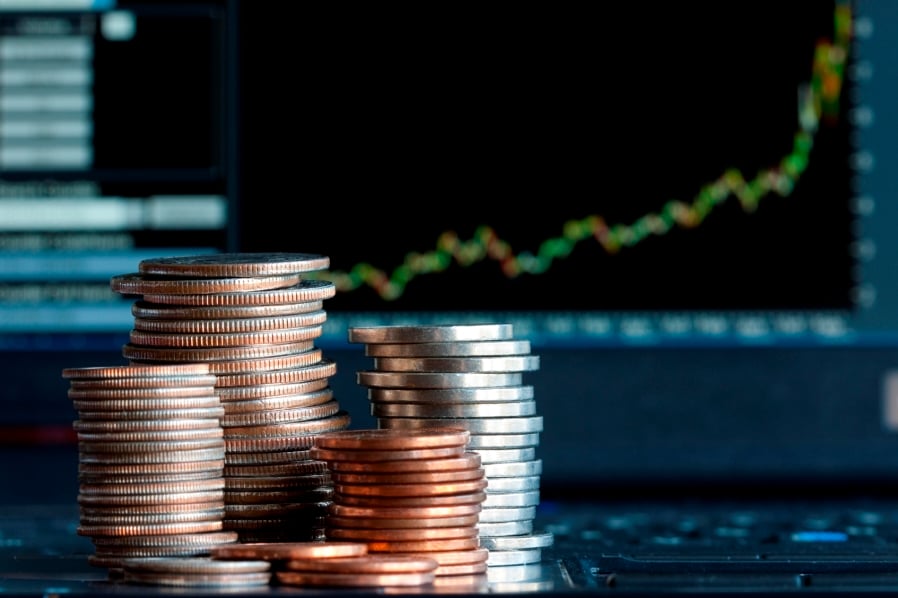It's no secret that demographic shifts in the developed world, combined with the recent market shocks and increasing volatility, have created new challenges for clients and financial advisers. There are fewer safe havens, owing to unstable equity volatility and the prospect of rising interest rates. This can lead to difficulty — and increased risk — in finding the income that investors want, or need.
Thanks to the widespread acceptance of ETFs, investors who are willing to take on some risk are turning to them to meet other investment needs — including income. As with most investments, the wrapper is generally less important than the strategy.
Consider why income-producing ETFs are growing in popularity:
The 30-year secular decline in interest rates has left us with historically low yields in traditional fixed income. Looking ahead, bonds will continue to be under pressure from the prospect of rate increases, no matter how measured, and fears of unexpected inflation, no matter how irrational. This is the new reality in which we live.
Meanwhile, few investors feel good about the near-term outlook for global equity markets. Stock values have been plummeting. The long summer of historically low volatility is ending, fueling investor trepidation. Nonetheless, investors looking for capital appreciation over the long term need equity exposure in their portfolios.
(Related read: Generating income with ETFs: A how-to guide)
The old standbys of U.S. Treasury bonds and utility stocks may no longer suffice. To enhance income means taking more risk. Yet with the financial crisis still fresh in their minds, the last thing many investors want is to expose their hard-earned savings to more volatility. Investors' appetite for risk generally decreases with age, so new sources of income are required to meet their needs.
It is also true that for investors making regular withdrawals, down markets can considerably erode their retirement savings. This can lead to “dollar cost ravaging” — needing to sell most when prices are lowest, in order to generate the same dollar amount. Countering this requires a more defensive income strategy that provides investors with a steadier base of payments.
To solve these challenges, we can provide an aging and skittish investor population with ETF options that deliver the dependable income they want — without carrying too much risk.
Fine. How?
Investors can consider two factors working in unison: high dividends and low volatility.
Neither is new to the scene: Dividend funds are among the fastest growing in the smart beta space, while low volatility funds have become the second-largest attractor of assets under management for the three-year period ended Sept. 30. They are designed to address investor needs for income-generating assets with the potential for growth above inflation, combined with lower volatility and improved diversification.
(More from Rick Genoni: Market-cap-weighted ETFs aren't all they're cracked up to be)
Experienced investors understand that funds focusing on stocks offering sustainable dividends — consistent payments over time — can be an excellent way to generate income. The best dividend generators include those with track records that go back not just years but decades, though market declines can cause short-term performance to fluctuate. Look up the highest-dividend-paying companies historically, and you see an abundance of household names. The most obvious sectors are utilities, energy and consumer products.
History also has repeatedly demonstrated that dividend-paying stocks exhibit lower sensitivity to the broad market, giving them generally lower volatility. This can lead to lower drawdowns in declining markets, with the potential to achieve greater diversification and enhanced capital preservation. Thus high-dividend funds can be part of defensive strategies in roiled markets.
Yet even with less downside, investors can still participate in the equity risk premium. Dividend stocks can offer higher-than-inflation growth. They seek to do this by focusing on strong, well-managed, profitable companies, solid performers that have succeeded quarter after quarter, year after year.
Like all stocks, they can rise and fall in value on any given day, but high-dividend funds have demonstrated track records of consistently growing their asset base over time.
There is a potential problem with indexed dividend stock funds, however: from one quarter or year to the next, the highest yielding can be unsustainable. Companies that up their dividends often do it for reasons aimed at the short rather than long term, such as historically abnormal results or as greenmail to placate activist investors. This creates a classic tortoise and hare problem: high dividends usually get cut, substantially. Hardly a recipe for reliable income.
Identifying stocks that are most likely to produce high dividends in a sustainable way takes experience and skill. When well-constructed and well-managed, these products have the potential to meet all three of investors' primary objectives – capital preservation, growth and income – without taking on unacceptable risk. It's a nice combination, especially when available at the lower costs of ETFs.
So investors can buy ETFs to get income from dividends, (often above what they could generate from individual stock picking), risk management for market volatility (potential for smoother returns with less downside risk) and long-term equity appreciation (if the stocks meet historical expectations).
Thus financial advisers can use high dividend, low volatility products to take the place of fixed income and equity allocations without stretching investors' imaginations.
Best of all, it's an easy strategy to explain to clients.
Rick Genoni is managing director and head of ETF product management at Legg Mason. His opinions are not meant to be viewed as investment advice or a solicitation for investment.







